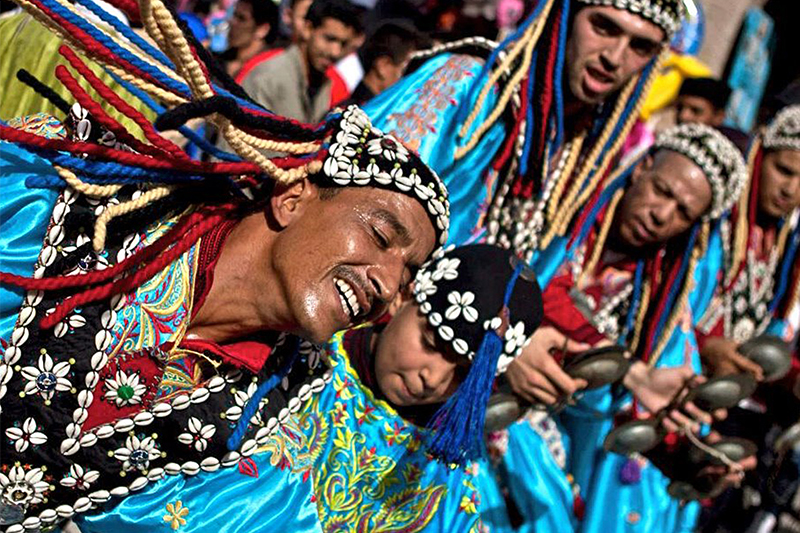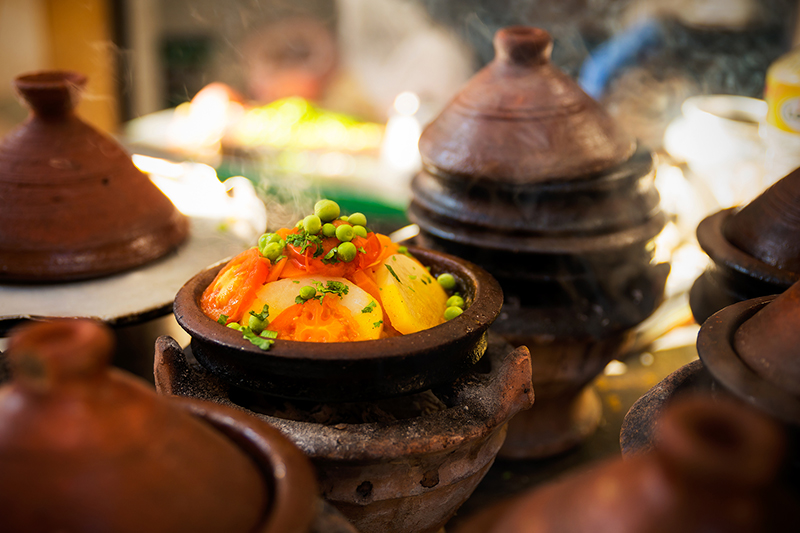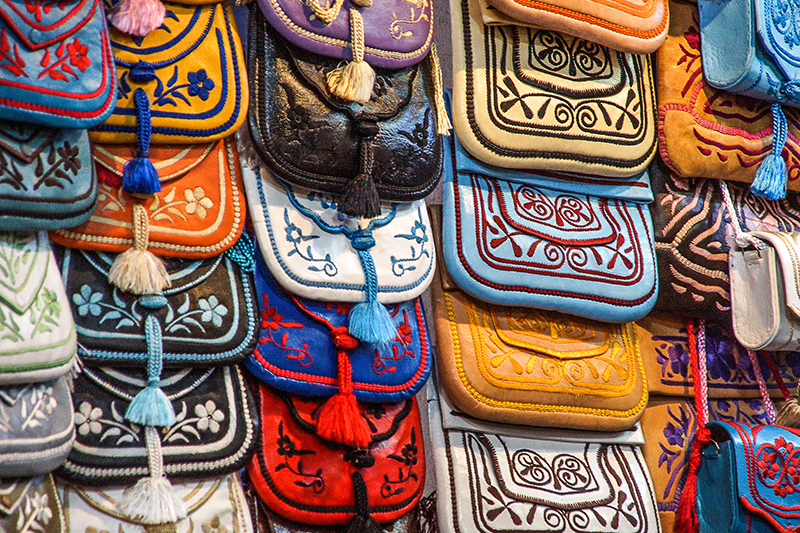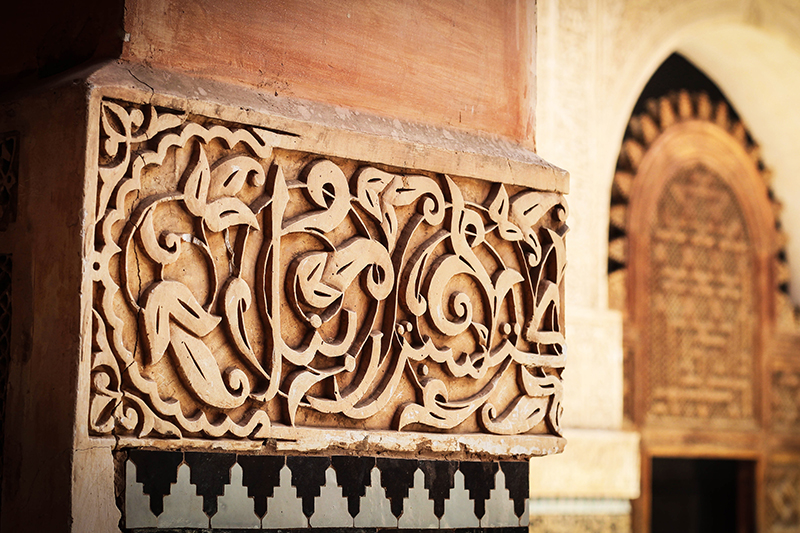If your desire is to know the variety of the landscapes joining the charms of our culture and traditions… enter the desert! And also tour the main medinas and markets of the country, enjoy the beach atmosphere of our coastal cities, share a tea with mint, hypnotise you for the five calls to prayer from the top of the minarets of the mosques, get a tattoo with henna and taste a delicious dish of Moroccan cuisine … with our circuits all this, and more, it will be possible.
Because our desire is not only to organize tourist trips, but also to provide experiences that allow an authentic and real immersion in the country you are visiting.
With an intricate and varied history, it is inevitable that over the years Morocco has developed an abundant cultural and interesting offer.
Crafts, Architecture, Gastronomy and traditions are just some of the identity features that make Morocco the best tourist destination for travellers with cultural concerns who are attracted to the exoticism and magic of a country where the vast majority are Imazighen (Berbers) and Arabs. A town of friendly and welcoming nature for locals and for those who visit us, with a great sense of hospitality and strongly linked to our traditions, culture and religion.
The architectural legacy in Morocco is undoubtedly one of the attractions that helps every trip to Morocco become an opportunity to admire the artistic wonders of Islamic architecture and traditional adobe Berber buildings in southern Morocco.
The Craft in Morocco is a peculiarity of the Moroccan identity and is part of our rich artistic and cultural heritage, where manual techniques are the basis of all the pieces worked, whose activity is mainly developed in small workshops inherited from generation to generation.
Moroccan handicrafts are abundant and varied, and when walking through any medina or market you can find all kinds of objects and ornaments, from carpets, slippers, djellaba, lamps, mosaics of tiles, pottery, basketry, jewellery, leather accessories, all done by hand.
Moroccan Gastronomy is characterised by a cuisine whose recipes have passed through several generations, and is one of the aspects of the country that best represents us. The combination of salty and sweet flavours, and the use of condiments and spices are added to the simplicity in the preparation of their dishes.
The best-known dish is couscous, a semolina that mixes with different vegetables. The second star recipe is undoubtedly the tajine, a stew of lamb, chicken or fish, accompanied by vegetables and vegetables simmered.
And Morocco is just one step away from the main European cities, thanks to its character and personality, it has become one of the star destinations in recent years.

CULTURE
Originally inhabited by Imazighen (Berbers), Morocco became a province of the Roman Empire in the first century. After successive invasions, Islam was brought by the Arabs in the year 670 when the first Islamic conquest took place.
Imazighen, Phoenicians, Romans, Carthaginians, Portuguese, Turks, Arabs, Spanish and French have had a great presence here for years, as well as another series of ethnicities that followed trade routes from one continent to another. This melting pot of cultures and customs has given rise to the Moroccan people of the 21st century. With an intricate and varied history, it is inevitable that over the years Morocco has developed a rich cultural and interesting offer. Today the vast majority of Moroccans are Imazighen / Arabs. A friendly and welcoming people for both locals and visitors, with a great sense of hospitality and strongly linked to our traditions and culture.
HENNA

Henna is one of the most appreciated plants in Morocco for its medicinal properties.
It is antiseptic, antibacterial, antifungal, antihemorrhagic, etc., but also has cosmetic and magical qualities. It is used to dyeing and clean the hair, as well as to beautify hands and feet.
Henna is part of Moroccan popular culture, as a generating element of good and a talisman against the “evil eye” or any other evil. In this way, henna, is traditionally present in all family, holiday or religious events.
The color of natural henna is green and when working the result of the color ranges from orange to brown, depending on the thickness and pigmentation of the skin.
An Arab proverb refers to henna:
“If my words were false, I would not present my hand dyed with henna.”

TEA
Tea is part of the cultural tradition of Morocco and there is no traveller returning home without having tasted this delicious national drink.
This national drink, green tea mixed with mint leaves and sugar, is drunk alone or with meals.
It is a symbol of hospitality and is always offered to the newcomer.
For the tea ritual is used a metal teapot, glass cups with golden edges and arabesque motifs.
Once the tea leaves, mint and sugar are deposited in the teapot, the tea is poured into the glass, from a considerable height, and then the contents of the glass are emptied again into the teapot.
This operation is repeated several times, until the tea begins to foam at the glass. That is when you should taste.
It is served in 3 rounds and is usually accompanied by Moroccan pastries, honey, dates, pistachios or almonds.
GASTRONOMY

Moroccan cuisine shares many elements in common with Mediterranean cuisine thanks to the exchange and influence that occurred with Al-Andalus, for this reason there are plenty of vegetables, fruits, cereals, nuts, olives and the famous olive oil.
The products are fresh and of the highest quality, mostly from organic farming, without the use of pesticides, especially when we move away from the big cities and enter the rural areas.
Moroccan cuisine is connected to the culture and religion. It is a symbol of identity which is reflected in the preparation of its dishes.
The kitchens are the places where you can find the essence of a country: its culture, climate, economy, social relations, the character and the history.
Moroccan cuisine is very simple and can boast of not having received any influence of Turkish cuisine; although it has Berber, Moorish and Mediterranean influences.
The main atribute that stands out from Moroccan cuisine is its excellent quality raw material since it is prepared, mainly, with natural ingredients: vegetables, meats (except pork), fish (in coastal areas), spices and fruits. The presence of industrialised products is almost zero and it is precisely that natural, local character that gives it the exquisite flavour.
Thus, with natural products found in markets throughout the country, Moroccan kitchens emerge an interesting selection of stews that have crossed our borders and that today are included in many homes in the rest of the world such as Couscous, the skewers or the Tajíne.
We should also look to another characteristic of the Moroccan cuisine, the use of sweet and salty that is evident in some dishes such as Bastela or Pastilla (a kind of puff pastry stuffed with onion, pigeon or chicken and almonds), or the use of dates or figs in dishes such as Tajíne or Couscous. And of course, the homemade sweets and desserts, without missing the delicious honey.
Another notable element of Moroccan cuisine is the use of vegetable oils such as olive and argan oils, of which Morocco is a great producer.

HANDICRAFTS
Craftsmanship is one of the aspects of greatest interest and attraction that you can find in Morocco and is an essential and indivisible part of the artistic, historical, social and cultural heritage of the country.
Moroccan handicrafts have passed from generation to generation, from parents to children, obtaining pieces of great beauty. Especially noteworthy are pottery, carpet weaving, embroidery, wickerwork, work in leather, brass, copper, bronze, wood, goldsmiths and jewellery. In each Souk or market, looking as a middle ages markets, we can find authentic artists and true craftsmen masters, grouped in their specialties.
Each Region has its specialties and its way of working them.
ARCHITECTURE

Resulting from a rich ancient history, Morocco has real architectural jewels spread throughout towns and cities.
The charm of Moroccan architecture lies in its magic, in the exoticism of its forms and in the beauty of its colourful. Morocco is full of mysticism and natural beauty as well as the magnificent architectural style that has endured over time.
Despite the appearance of modern apartments and offices, old buildings have never lost their charm. In fact, many elements of that ancient architecture can be seen in modern buildings that have been recently built. Morocco has a special mix of architectural styles, in which the Islamic style merges with Black Africa. Through the oldest buildings, we can find how the principles of Islamic architecture predominate.
Since Morocco has been a country that has gone through various invasions it is also easy to find fortifications surrounding the palaces or camps in the desert. The style of Moroccan architecture is splendid and very attractive.
Some of these characteristics that all the ancient buildings of Morocco have in common are the arches and domes. There are great courtyards surrounded by beautiful gardens that complete and embellish the place.
Religious corners, such as mosques and other monuments, are also decorated with Persian and Islamic calligraphy, which runs through both domes and arches. The use of geometric patterns is also frequent and is common in Moroccan buildings.
The first inhabitants of Morocco were the Berbers. Subsequently, numerous invaders have passed through the country that have left their mark on the country’s architecture.
One of the oldest architectural styles appears in the fortified cities that were built around the Atlas. They are a simple line and have strong equipped with watchtowers. Moroccan art and culture offer all its richness and splendour to the delight of visitors.
In architecture the impressive Moroccan constructions can be divided into those that have a religious character, mosques, minarets or madrasas, and civilians, medinas, walls, doors and houses.

RELIGION
The Kingdom of Morocco is a constitutional parliamentary monarchy with an elected government. Our current king is Mohammed VI has executive and legislative powers and is also the chief state religious.
Morocco is a religious country, and 99% of the population practices the Muslim religion, but coexists perfectly with other religions.
Each day is marked by five calls to prayer. Moaddin is the one who announces them since high from its minaret.
- Fajr: immediately before sunrise.
- Zühr: zenith.
- Asr: mid-afternoon before sunset.
- Maghrib: twilight.
- Isha: at night.
The Mosque is Islamic religion’s centre, but the entrance is only allowed to Muslims, except for the Hassan II Mosque in Casablanca.
Opening hours with guided tour:
- From Saturday to Thursday at 9 am, 10 am, 11 am, 12 am, 3 pm. during the summer time also at 4 pm.
- Friday 9 am, 10 am, 15 am, in summer time also at 4 pm.
During Ramadan month:
- From Saturday to Thursday at 9 am, 10 am, 11 am
- Friday 9 am
Daily life in Islam suffer a big change during the Ramadan period, where practitioners of the Islamic religion fast, do not drink or smoke from sunrise until sunset.
What is the Ramadan:
Every Muslim must celebrate the month of Ramadan, which is the ninth month of the lunar year. The only exceptions are the elderly, the sick, children, pregnant women and travellers.
Ramadan lasts approximately 29 days, but nobody knows exactly when it begins and when it ends until the religious leader of the nearest mosque decides.
Our services are carried out normally during the entire period of the Holy month, but keep in mind that sometimes in shops, monuments, museums, local guides, etc. may be altered.


